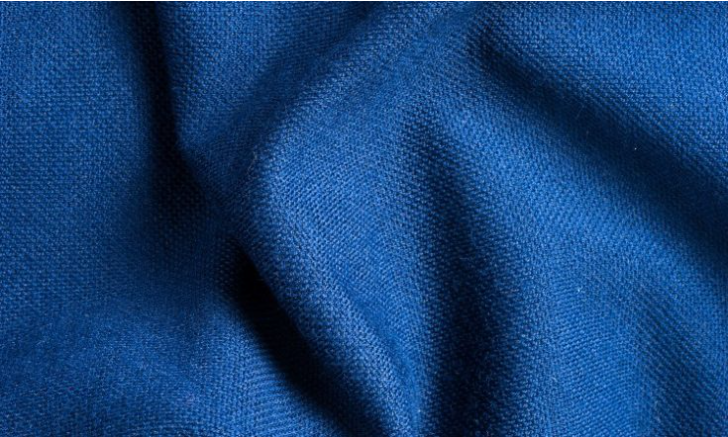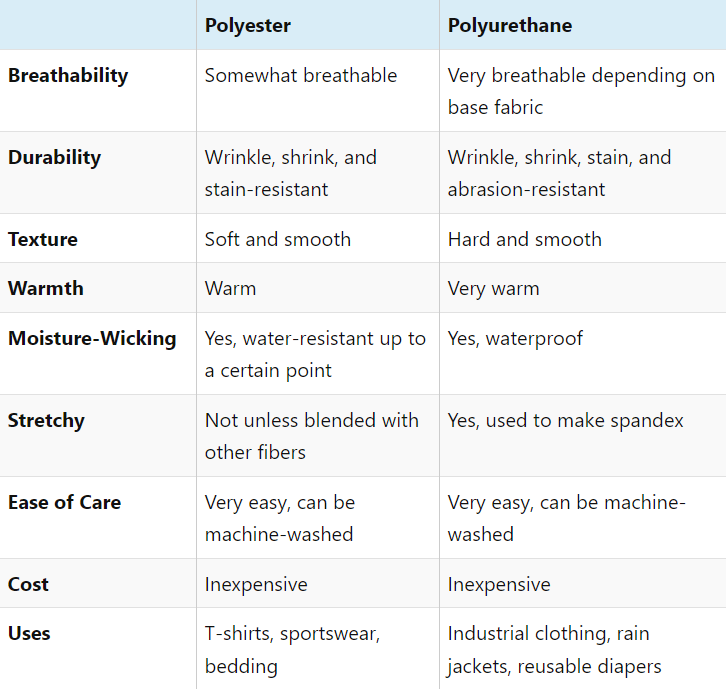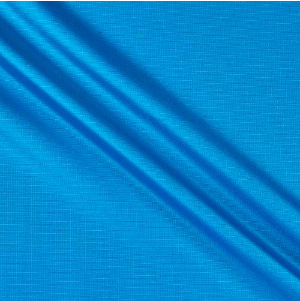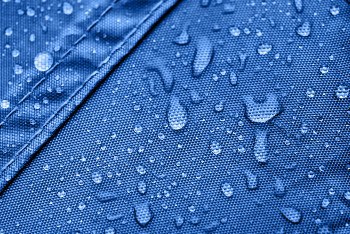Polyester vs Polyurethane: What Is the Difference?
Polyester and polyurethane are two widely used synthetic fabrics. Just based on their name alone, you can probably tell that they have similar uses. But although they do have some similarities, they have some differences as well. So what are the differences between polyester vs polyurethane? I’ll tell you in this article.
Because polyester and polyurethane are both synthetic, it means that they are essentially made of plastic. Being made of plastic gives them certain qualities such as being durable, easy to care for, and inexpensive. But they differ greatly in terms of texture, warmth, level of stretch, and uses.
Is one of these fabrics better than the other? And how can you decide which is right for you? I’ll explain several different aspects of both polyester and polyurethane so you can get a better idea of their differences. We’ll also look at the overall pros and cons of each one. Continue reading to learn more.

Polyester vs Polyurethane: Key Points
The following table provides a brief description of some of the key characteristics of polyester and polyurethane. It will give you a brief overview of their similarities and differences. We’ll look at each one in more detail a little later.

What is Polyester Fabric?
I’ve already mentioned that polyester is a synthetic fiber, but what exactly does that mean? Essentially, polyester is a fabric that is made of many plastic molecules known as esters. These molecules undergo chemical reactions that give them certain properties and turn them into usable fibers.
Once the fibers have been created, they are woven together in different ways and sometimes brushed to give them different textures. Polyester can take on many different forms and is even used to make microfiber and fleece. It is a very versatile fabric which is why it is so popular.
What is Polyurethane Fabric?

Polyurethane is another type of plastic, synthetic fiber that can be created in different ways to be used for different products. In the case of polyurethane fabric, fibers made from different materials (e.g., polyester, cotton, or nylon) are woven together and then coated with polyurethane to give the fabric a leather-like appearance. That means that some polyurethane fabrics are made out of polyester, but not all of them are.
Being coated in polyurethane also gives a fabric certain characteristics, which I’ll discuss more later. Polyurethane can also be used as a fiber to make certain types of stretchy clothing. These fibers are the main component of spandex, lycra, or elastane, which are all different names for the same type of fabric.
What’s the Difference Between Polyester and Polyurethane?
Breathability
Polyester is not as breathable as natural fabrics like cotton are, but it is somewhat breathable. The breathability allows the fabric to circulate air through it more freely, which helps to keep the wearer cool and comfortable. It’s due to this breathability and other aspects of polyester that make it an ideal fabric choice for clothing such as sportswear.
Polyurethane is also someone breathable due to its lightweight nature and having a similar fiber structure to that of polyester. But since polyurethane is sometimes just a coating on top of another fabric, sometimes polyurethane fabrics can be more breathable than polyester depending on what base fiber they are made of.
Durability
Polyester and polyurethane are two of the most durable fabrics you can find. A fabric with a polyurethane coating can be even more durable than the same fabric without the coating. Polyester is durable in that it is resistant to wrinkling, shrinking, and stains. Generally, polyester fabrics can last a long time provided that you take care of them properly.
Polyurethane is similar to polyester because it is also stain, shrink, and wrinkle-resistant. However, it can sometimes be more durable than polyester because it is generally resistant to abrasion. And some versions of polyurethane fabric are even coated with another chemical to make them flame retardant.
The only thing you have to be careful of with these two fabrics is exposure to heat. They won’t shrink due to heat in the way that cotton or wool will. But unless they are treated to be flame retardant, both of these fabrics can melt or become damaged easily when exposed to high levels of heat. This is due to being made of plastic, which melts at a much lower temperature than other materials.
Texture
The texture is probably one of the areas in which these two fabrics differ the most. Because it is such a versatile fabric with many uses, polyester can have many different textures. In general, polyester fabrics are smooth and soft. Although polyester won’t be as soft as cotton, it can feel somewhat similar but will be a bit stiffer. You can also brush polyester yarns in different ways to create more textures, including fluffy ones, which is how we end up with the many different versions of fleece fabric.
When compared to polyester, polyurethane has a rougher texture. It is still smooth but not as soft. Instead, it is harder and can sometimes have a more similar texture to that of leather. This is due to the coating that is used to cover the fabric. When polyurethane is used to make spandex, it doesn’t have a leather-like texture. Instead, it is smooth and has a bit of a softer feel to it. But overall, polyester has the advantage when it comes to softness.
Warmth
Polyester and polyurethane are both warm fabrics. Polyester is warm in that it is breathable and allows hot air to circulate through the fabric. And when used for fleece, the fluffy texture is very warm and insulating against your skin.
Because the fabric is coated, it may seem as if polyurethane isn’t that warm. But it actually has insulating properties, so it provides a lot of warmth to the wearer. A different form of polyurethane, polyurethane foam, is even used to provide insulation to houses and buildings.
Moisture-Wicking

Polyester and polyurethane both have great moisture-wicking properties. Polyester isn’t completely waterproof, but it isn’t water-resistant. That means that it will keep water and other forms of moisture off your clothing to a certain extent until the clothing becomes saturated. Any water that does find its way onto the fabric should stay near the fabric’s surface and evaporate quickly.
Polyurethane fabric is closer to being completely waterproof. Water has a hard time penetrating fabric that has a polyurethane coating on it. The coating acts as a protective layer for the fabric. It works in the same way that using polyurethane sealers on outdoor furniture works. Water beads up or slides right off of the fabric if it gets wet. And unlike leather which can get damaged due to water, polyurethane fabric remains unharmed.
Stretchy
Polyester fibers are not stretchy by themselves. But the fibers are woven together in a way that makes the fabric somewhat stretchy. Even so, it still isn’t the stretchiest fabric. Sometimes elastic fibers such as spandex are blended with polyester fibers to increase the amount of stretch.
Polyurethane is known as an elastomeric polymer, which means that it is very stretchy.
The individual fibers are even stronger than rubber and they won’t “wear out” and lose their stretch over time. As a result, polyurethane fibers are used to make spandex.
Ease of Care
Polyester and polyurethane are both easy to care for due to their durability and being shrink and wrinkle-resistant. Polyester is fairly stain-resistant as well and most can be removed with a pre-wash stain treatment. Then, you can just toss the item in the washing machine and wash it on the normal cycle with warm or cool water.
With polyurethane, most spills can be wiped off with just soap and water. You can also wash it in the washing machine the same way that you would wash polyester. The important thing to remember with both of these fabrics is that you don’t want to wash them in hot water and you don’t want to dry them using a high heat cycle due to damage that can occur. Air drying or drying on low heat is best.
Cost
Both of these fabrics are very inexpensive. Polyester is one of the most inexpensive types of fabric and comes in various styles of colors. Because of its texture and appearance, polyurethane is often used as a cheaper alternative to leather and comes in a wide range of colors.
Uses
Polyester is mostly used for clothing, particularly sportswear. It can also be used for trousers, button-up shirts, jackets, and hats. Polyester is even used for some household fabrics, including blankets, bed sheets, and upholstery.
Polyurethane is not as versatile as polyester. Due to the fabric’s high resistance to abrasion and overall durability, it is used for many industrial clothing, particularly on oil rigs. It has more practical uses than polyester does. You can even find reusable diapers, raincoats, and life vests that are made from polyurethane.
Pros and Cons of Polyester
When it comes to polyester, the pros outweigh the cons. For starters, polyester is one of the most durable, inexpensive, and easy to care for fabrics there is. It is also stain, shrink, and wrinkle-resistant. Lastly, it is moisture-wicking, which means that it will keep you dry and dry quickly if it gets wet.
Polyester does have a few cons when compared to polyurethane. It already isn’t as breathable as other fabrics, but it can sometimes be less breathable than polyurethane, depending on what basic fibers make up the polyurethane fabric. It also isn’t as stretchy as polyurethane and is more water-resistant instead of being waterproof. Finally, polyester can’t tolerate high heat, so you need to be careful of how you wash and dry it.
Pros and Cons of Polyurethane
Like polyester, polyurethane fabric has more pros than it does cons. In some cases, it is even more durable than polyester due to its abrasion resistance. It’s also waterproof and easy to clean because most stains can be wiped right off without even penetrating the fabric. Polyurethane also has incredible insulating properties and has high elasticity.
One of the cons of polyurethane is that it is often not as soft as polyester. It has a stiffer and more rigid texture and can’t be brushed to create different versions of the fabric. It’s also not as versatile as polyester and has more practical uses than it does fashion uses. Lastly, like polyester it can become damaged if it is exposed to too much heat.
Which Is Better?
Now that we’ve discussed the properties of polyester and polyurethane, which one is better? Polyester is better for everyday wear, while polyurethane has a specific use for which it is good. So ultimately, which one is better just depends on what kind of product you’re looking for. Usually, you won’t have to decide between the two because they each have different purposes.
Polyester is good for basic clothing and t-shirts, including sportswear. It’s also a good choice for bedding. Polyurethane is better if you’re looking for clothing with a faux leather look without the expense of real leather. It’s also a good choice for camping gear, such as rain jackets and tents.
Conclusion
Polyester and polyurethane have their similarities, but they are very different as well. They are both very durable fabrics that are easy to care for and have great moisture-wicking properties, but they differ in texture and use. Polyester can be both fashionable and practical, while polyurethane has more practical uses. If you enjoyed this article, leave a comment and share it with others. Thanks for reading!
Any questions please feel free to ask me through Andrew@sinotxj.com
Post time: Jul-10-2023






